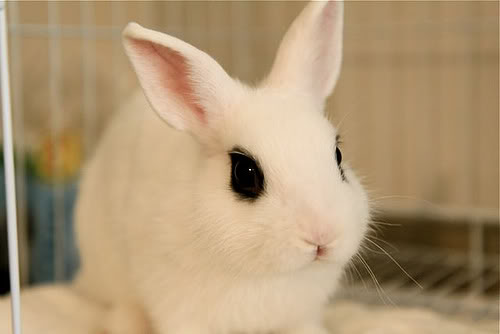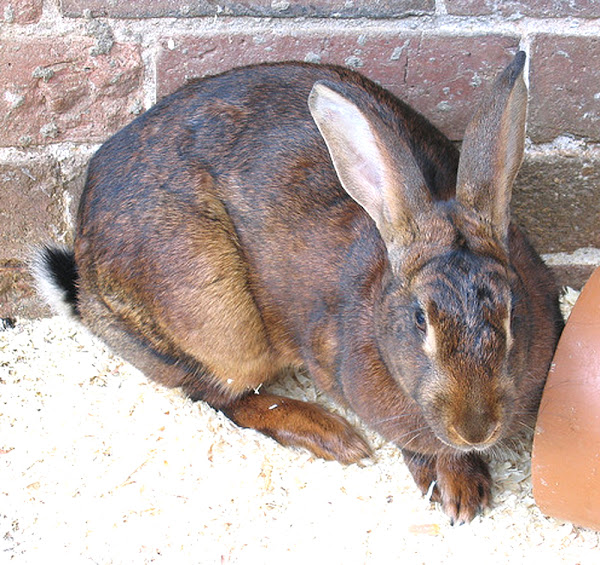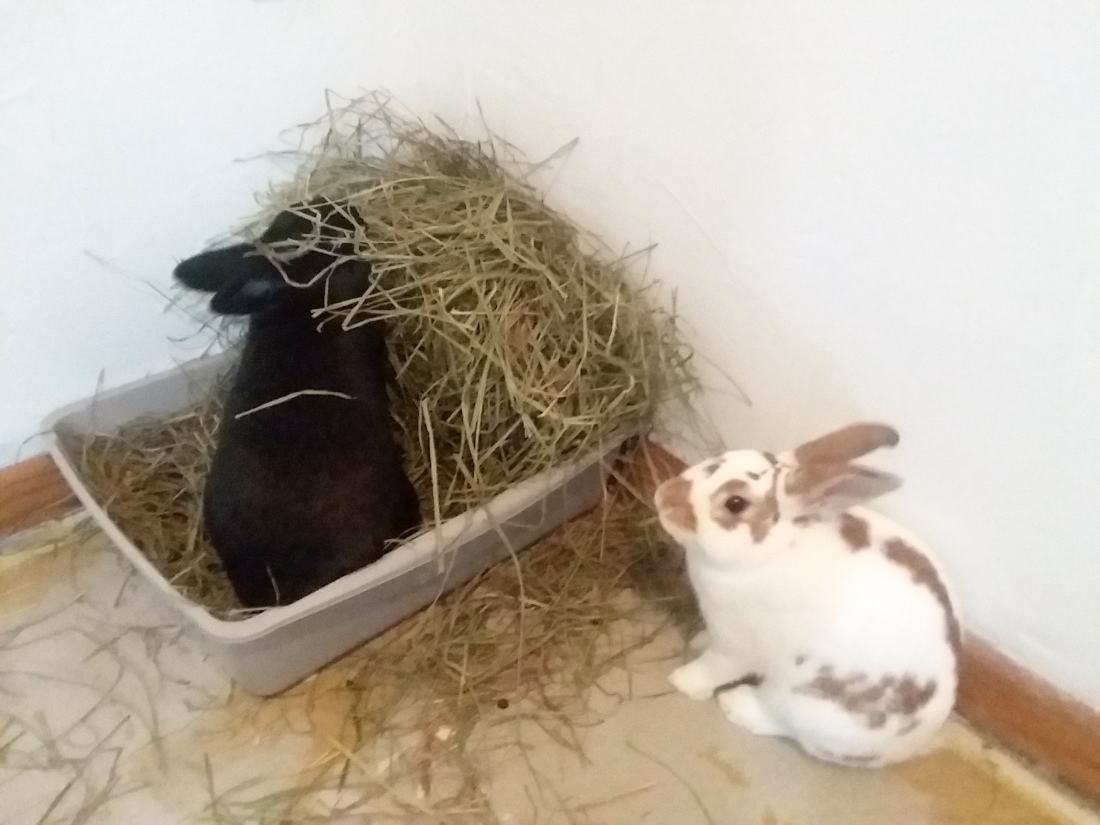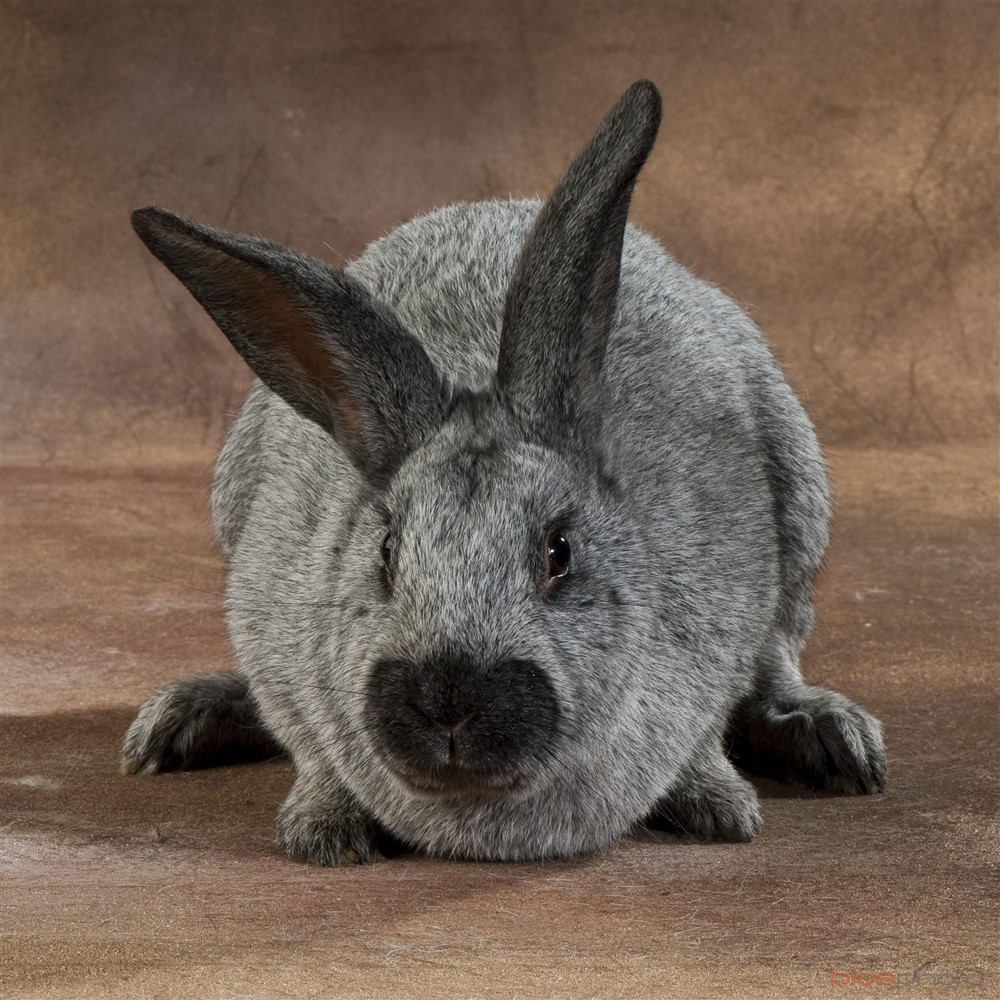To finish off with unsafe forage, I would like to go over the characteristics and adaptations (if there are any for certain plants) of these different options. Please note that you should always look up what these plants look like, but my description is here to help in case you think you see a certain plant, you could check the description to match it to the plant.
I would suggest using this list as a source for if you were to go out and forage, that you would have it with you, along with pictures of all of the unsafe forage options. This way, you can insure that you will not giving any unsafe forage to your rabbit(s), or even touching anything poisonous.
Characteristics:
- Foxgloves: Foxgloves are tall stemmed plants with bell shaped flowers. The flowers are located all throughout the stem and are a purple color, going darker on the more inside area of the flower, and going lighter on the outermost area of the flower.
- Poppy: An average poppy will have red petals and a black, rounded stigma, similar to the stigma shape of a daisy. It has very small leaves that look very similar to what hemlock needle clusters would be.
- Ivy: Ivies have very pointed leaves that are dark green. There are usually three main points on each leaf and are connected by a vine-like stem. This stem is very flexible and thin.
- Buttercups: Buttercups are small, yellow flowers that are very similar to what a daisy would look like if it had an insanely tiny stigma and the petals were bright yellow and much more round. The petals are also much smaller than daisy petals.
- Bluebells: Bluebells are very small, bell-like flowers that are extremely similar to what foxgloves look like. They are pretty much foxgloves with blue flowers. They have the bell-shape, blue flowers, long and tall stem, and the flowers that sprout throughout the entire stem.
- Ragwort: Ragwort, or stinking willie, is a flower with yellow, pointed petals. The stem is quite tall and the leaves are very long, wide, and tend the stand partially upright. The leaves are also jagged-edged and dark green.
- Arum: Arums are actually lilies that have an arrowhead-shaped flower. The stem is not all that tall and the leaves are a dull green and club-shaped. The flower itself is usually purple or white from what I have found.
- Bryony: Bryony, or bryonia, is a plant that will commonly produce small, red berries and tiny, yellow flowers. The leaves are very overtaking and are a medium green color that are club-like.
- Hemlock: Hemlocks are very broad and dark green trees that look like a lumpy pine tree. Their needles are grouped in a duck-foot formation and will grow buds on the end to start another formation. The needles are much shorter than pine needles and they are also all separate in a way.
- Aconite: Aconite is also known as the “Devil’s Helmet” or “Wolf’s Bane” due the deadly poison it carries. Aconite is a purple flower with scooped petals and long, tall stems.
- Celandine: There are two types of celandines, the lesser celandine, and the greater celandine. Either way, the flowers are both yellow. Lesser celandines have pointed petals, when greater celandines have rounded petals. The leaves are medium green and slightly jagged. The lesser celandine belongs to the buttercup family and the greater celandine belongs to the poppy family.
- Corncockle: Corncockles are commonly found to be a pink-like purple shade and have slender stems with dark, pointed leaves that are also long and slender.
- Cowslip: Cowslips have very tall stems with multiple flowers shooting out of the top of the stem. the petals are yellow and small, the flower itself being bell-shaped.
- Fool’s Parsley: Fool’s parsley is a flower with very small and white flowers that are grouped together at the peak of the tall and slender stem. The leaves are flat and look like mini hemlock needle clusters. The leaves are not needles though, they are an actual leaf, just in the duck-foot formation.
- Henbane: Henbane is also known as “Nightshade” due to its poisonous factors. The flower is bell-shaped and the center of the flower is a dark purple, the outermost area of the flower being a light yellow color. The flowers are sometimes found on one large stem in a row. The leaves are slightly pointed, look minorly fuzzy, and are very similar to what some tree leaves could look like.
- Hedge Garlic: Hedge garlic, or garlic mustard, is a very green plant with jagged, club-shaped leaves that make up the majority of the plant. There are also tiny, white flowers that cluster at the top of a stem that shoots out of the center of the leaves. The leaves also tend to make the plant look as though it has its own mini bush.
- Spurge: Spurge is a very wide and bushy plant that is commonly found as a weed, and is known to grow in any little crack, but turn into this widespread plant. When the plant has enough room, it will turn into a bush and has the capability to produce yellow flowers at the peak of each bushy stem.
- Traveler’s Joy: Traveler’s joy, or “Old Man’s Beard”, is a white flower with petals in capability to grow extremely long to the point that it looks like a beard. The leaves are a medium green and are very round at the base and come to a point.
- Tree Lupine: Tree lupine is a large bush that will produce yellow or white flowers at the peak of each point on a stem. The flowers are very small and like to grown around the entire end of the stem, creating a cattail look, except with flowers. The bush is a medium green and is quite rounded.
- Wild Garlic: Wild Garlic, or “Ramsons”, are white flowers with rounded leaves at the base, and pointed at the peak. The leaves are quite long though. The flowers are very small and the petals have a pointed look. The leaves and flowers can be pulled from the ground to be used as a food source for humans, though you do have to be very careful. Always do extra research before eating wild plants, they may have certain parts of the plant that are poisonous.
- Wood Sorrel: Wood sorrel is clover with little, white or yellow flowers that will sprout from the base of the clover. The only difference between this clover-looking-plant and actual clover is that this plant’s clover is connected with a vine. The vine is extraordinarily thin and grows the flowers from the base of the vines.
Adaptations and How They Help:
- Foxgloves: Foxgloves carry an adaptation to soil and to nectar contents. They have an extremely high nectar content, attracting bees, butterflies, and humming birds. I would also like to note that part of foxglove plants are fatal to humans and animals, so don’t go and eat anything that you aren’t sure of.
This helps the foxglove by allowing the organisms that are attracted to the nectar to come and gather that nectar, and in turn, the organism has pollen stuck on its body, and by that, pollinating the plant.
- Poppy: Arctic poppies are one of the most strong flowers, considering it is one of the northernmost growing plants that you will find. The flower’s structure is very tough, besides the petals. The flower is able to follow the sun, which attracts bugs.
This helps the poppies by allowing the bugs to come through their area and pollinate their plants. This is very important as northernmost areas don’t tend to have many pollinators, meaning that everyone of the pollinators have to count.
- Ivy: Ivy is very commonly found in the more shady areas of a forest, but they are able to grow up trees to reach the sunlight easier.
This helps the ivy by allowing the photosynthesis to properly happen, not to forget that the plant is not only getting the sun it needs, it’s also getting nutrients from the ground as it climbs up trees.
- Buttercups: Buttercups can easily tolerate flooding for 30 days, not to forget in low oxygen areas. This means that when there is a flood and there isn’t oxygen for the plants to use, the buttercup can store 30 days worth of oxygen.
This helps the buttercups by allowing the oxygen to continue to keep the plant’s capabilities of life going. All living organisms need oxygen, the buttercup showing that it is majorly important to it.
- Bluebells: Bluebells are very well adapted to living in forests due to their ability to store energy and take advantage of the high energy periods and absorb the nutrients. This when they would complete their life cycle.
This helps the bluebells by allowing them to grow at an extremely rapid pace since they have the capabilities to store energy in their bulbs to use when full leaf comes around again to grow.
- Ragwort: Ragwort has the ability to survive in many different habitats, allowing its population to spread and grow at a rapid pace.
This helps the ragwort by allowing the plant to grow in many different environments and habitats. They are also very compatible with certain soil contents, depending on if the drainage is proper.
- Arum: Arrow arum relies on its seeds to do the reestablishment of the species. The arum seeds are held in capsules of fruit, which would rupture when soaked in water.
This helps the arum by allowing the seeds to have an easy transport, considering if a bird would kick a berry, all it needs is water, and before you know it, there might be a plant sprouting.
- Bryony: Bryony carries a bryonin that is poisonous. They also have an extremely thick, white bulb that can easily store the seed of the plant without another organism coming through and easily destroying the plant’s seed.
This helps the bryony by keeping the plant itself safe from any predatory organisms that may try to destroy the plant, but the predator will either have troubles with getting to the seed and destroying it, or by the poisonous bryonin it carries.
- Hemlock: Since hemlocks are trees, they need to be able to make it through winter. In fall, when the tree drops needles, the act prevents the cold, arid wind from evaporating and drying out the moisture of the tree. From here, the tree just needs to hold its moisture and survive the winds.
This helps the hemlock trees to keep them alive through winter by preventing the plant from drying out and potentially dying. Since the ground is frozen, the chance of getting water from frozen ground is nearly impossible, which is why this adaptation in trees is so important. The water is stored in its roots.
- Aconite: Aconite carries deadly poison that once killed a gardener just by brushing him. He died of multiple organ failures. I will link the story down below in the sources area if you would like to check it out.
This helps the Aconite by allowing any predator that may just stroll by, to become weak and die through organ failure. I know this seems very harsh, but the plant is fighting for its life, like how we fight for ours.
- Celandine: Celandine has orange sap that carries alkaloids that could be potentially poisonous.
This helps then celandine plant protect itself from any predatory animal in search to kill its plant. The predator will instead become weak of poison.
- Corncockle: Corncockle also carries a poison, causing many problems actually. They were very common in European farm lands and were taking nutrients from crops. The population majorly decreased and is hardly ever seen in the wild anymore.
This helps the corncockle by protecting itself from predators. Now that they are no longer found in the wild, they still thrive on farmland, constantly being destroyed due to its capability to give the crops a bitter taste from its poison.
- Cowslip: Cowslip is very commonly found in grasslands, which can be good and bad. The grasslands can allow an increase in the population of this plant. Here’s how:
This helps the cowslip by allowing the gusts of wild picking up throughout the land to carry seeds and help replant and grow the population.
- Fool’s Parsley: Like many of these other plants, fool’s parsley is also poisonous due to alkaloids found throughout the entire plant, but don’t forget that since it’s a poisonous stem plant, it also carries a poison throughout its stem.
This helps the fool’s parsley from predators destroying the plants. Fool’s parsley can be highly poisonous in small amounts, and fatal in large amounts, so BE CAREFUL!
- Henbane: Henbane also carries a poison consisting of stramonium and more alkaloids.
This helps out the henbane by injuring and potentially killing predators simply by allowing the predator to ingest its poison. The poison of henbane, like many other of these poisonous plants, can cause loss of muscular control, irregular heart beats, hallucination, coma, death, and much more.
- Hedge Garlic: Hedge garlic is extremely invasive and once one plant is there, you’ll have and entire forest of them soon. They are not toxic but are very tough plants. The roots are well-grounded and can easily regrow the plant if needed.
This helps the hedge garlic in many situations. Lets say that someone is going through and cutting the plants at the base of the ground, the plant can grow right back since it still has its roots, all it needs is one root to grow back its plant.
- Spurge: Spurge is an interesting plant with how it can adapt. It can sustain different soil types, but prefers sand due to the lack of other plants that can live within the arid and sandy area.
This helps the spurge because when the other plants die off, the spurge can take all of the nutrients left in the ground for itself and still thrive with 7 to 25 inches of rain annually, and when the temperatures are 50 to 100+ degrees Fahrenheit.
- Traveler’s Joy: Traveler’s joy is a climbing plant which allows the capability for the plant to reach sun in a shady area. This can help the plant get its sunlight and its nutrients form the soil. The soil can also vary with this plant as well.
This helps the traveler’s joy by getting it the nutrients from the ground and the sunlight from the capability to climb. The soil differences that are safe can also help with the population growth to allow widespread population.
- Tree Lupin: White lupin roots have the capability to change the way of their roots in case of a lack of phosphorous soils that they like.
This helps the plant to be able to survive without the extra nutrition they want, not need. The changing roots can help them find the nutrition to make up for the lack of phosphorous nutrients.
- Wild Garlic: Wild garlic is very easily spread throughout farmland and grassland areas that are very fertile and nutritious. The plant is minorly toxic if consumed in large amounts.
This helps the wild garlic spread easily throughout the Midwest region of the United States of America due to the farmland and rich soil. This is great for the wild garlic, not for the farmers, especially since it is minorly toxic.
- Wood Sorrel: Wood sorrel is a flower built to live in a forest where other plants can protect this flower. It is very weak, but has the capability to fold its leaflets down to prevent evaporation of moisture.
This helps the wood sorrel by preventing evaporation of the moisture it needs, especially when more sunlight is present, since its built to live in shade. This could potentially save the plant.
Sources:
I’m sorry that this post is so long. I realize that typing this is adding more to it, but I spend hours on this post, so please leave a like to show appreciation of what I’ve done.
Thank you for coming again for this post . I am now done with the safe and unsafe unit, and will now be going on with bringing rabbits outdoors and the details behind that subject. Leave a like so that I know that I’m doing this the way that you like and that this is all the style that you appreciate. Anyway, I will be talking to you in two days then, bye!









